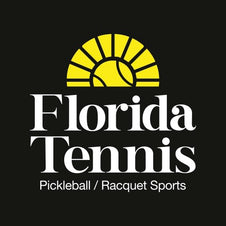Unlocking the Serve with Casey Curtis — Tips from Milos Raonic’s Former Coach
Jun 26, 2025
At South County Regional Park in Boca Raton, Florida Tennis Magazine editor Matt Pressman caught up with legendary coach Casey Curtis for a courtside conversation focused entirely on one thing: the serve. Known for developing Milos Raonic into the most dominant server on the ATP Tour, Curtis offered insights that went far beyond technique drills.
“I’m a big believer in a platform stance,” Curtis said early in the interview. “The main reason for that is very simple—it’s balance. I think it’s easier to be accurate and consistent with your serve and also your ball toss.”
Curtis acknowledged that both platform and pinpoint stances have produced great servers, but when it comes to consistency, his preference is clear. “The best servers—the most accurate and the most consistently good servers—were mostly platform.”
Naturally, the conversation turned to Raonic and his place among the game's great servers. “I always believed Milos could have been the best server of all time—had he done one thing: hit his topspin kick serve harder.”
 Above: Milos Raonic serving at the 2013 French Open. Photo credit: RB Photo, CC BY 2.0, Via Flickr.
Above: Milos Raonic serving at the 2013 French Open. Photo credit: RB Photo, CC BY 2.0, Via Flickr.
According to Curtis, Raonic proved the potential was there. “He did it one year at Wimbledon—the year he got to the final. He was averaging right around 120 (mph) on second serves.”
So why didn’t Raonic keep that weapon in his arsenal? “He knows I wanted him to do that,” Curtis said with a grin. “But he’s a very smart guy, and I’m sure he had his reasons for serving the way he did.”
Behind Raonic’s serve was a simple but relentless commitment to practice. “We spent really an hour a day, every day, on that serve,” said Curtis. “Always at around 50%. If you tried to serve full-out for an hour, you’re going to blow your shoulder out.”
He emphasized that practicing at half-speed allows young players to build the motion without risking injury. “You can learn the motion, get the toss down, perfect a service motion at 50%—then for the last five or ten minutes, go ahead and hit at tournament level.”
One of Curtis’s main points throughout the conversation was how often the serve gets overlooked in junior training. “Very few coaches were emphasizing the importance of practicing the serve every day,” he noted. “They’d go out, hit groundstrokes for four hours, and then spend 15 minutes on the serve at the end when everyone’s tired and talking.”
 Above: Casey Curtis demonstrates the perfect serving technique to Florida Tennis Editor and Publisher Matt Pressman. Photo credit: Florida Tennis.
Above: Casey Curtis demonstrates the perfect serving technique to Florida Tennis Editor and Publisher Matt Pressman. Photo credit: Florida Tennis.
When it came to technique, Curtis emphasized racket position during the toss. “I like to see the racket come up where the strings are actually forward,” he said. “You’re not thinking about the strings—you’re thinking about the edge of the racket.”
Another huge component? Toss disguise. “Having the same toss for all your serves—it’s great for disguise,” Curtis explained. “If you always come out of the same toss, your opponent doesn’t know which serve you’re going to hit.”
He added that varying toss positions gives away too much. “A lot of players toss out to the right when they’re slicing, maybe a little left if they’re kicking. If you come out of the same toss, they’re guessing.”
The conversation also touched on other rising stars, including Ben Shelton. “He’s got really good racket speed,” Curtis said. “It’s a very good serve… but I don’t think I’m quite ready to put it in the great serve category.”
 Above: Young players at Curtis Tennis Academy working on their serves. Source: Florida Tennis. Photo credit: Florida Tennis.
Above: Young players at Curtis Tennis Academy working on their serves. Source: Florida Tennis. Photo credit: Florida Tennis.
As for what role the legs play in a dominant serve, Curtis didn’t hesitate. “The legs are definitely important—not just for power but for getting a higher strike point,” he said. “Taller players tend to have better serves—not because they swing faster, but because they have a higher strike point.”
And while many players are told to generate power from their core and arm, Curtis cautions against over-reliance on upper body strength. “Good technique is almost as much about injury prevention as it is about generating pace,” he said.
To help simplify, Curtis often asks players to separate toss and racket motion temporarily. “Just put the ball here, forget about this,” he said, referencing a complex motion. “Keep your focus on the racket, and then toss. Just separate the two for a while, and then put them back together later.”
To learn more, schedule a visit, or watch instructional videos, visit www.curtistennis.com or follow @CurtisTennis on Instagram.
Exclusive Interview
===
Written by Florida Tennis Associate Editor Osvaldo Godoy. Interview with Casey Curtis conducted by Florida Tennis Editor and Publisher Matt Pressman. Photo credit (top): Florida Tennis.

